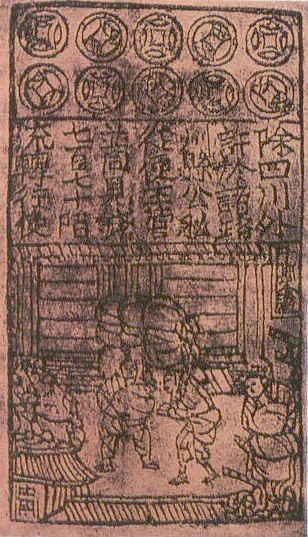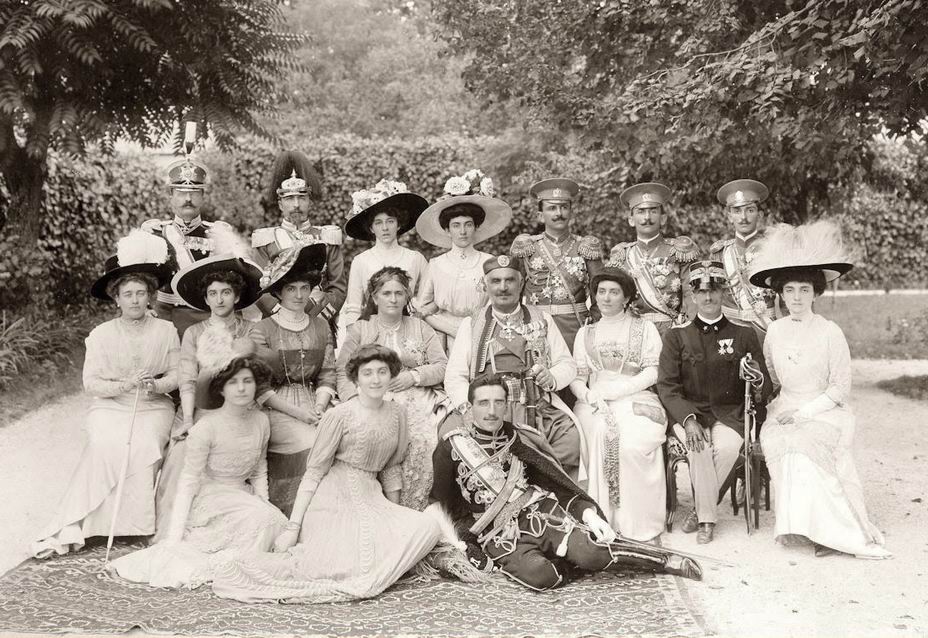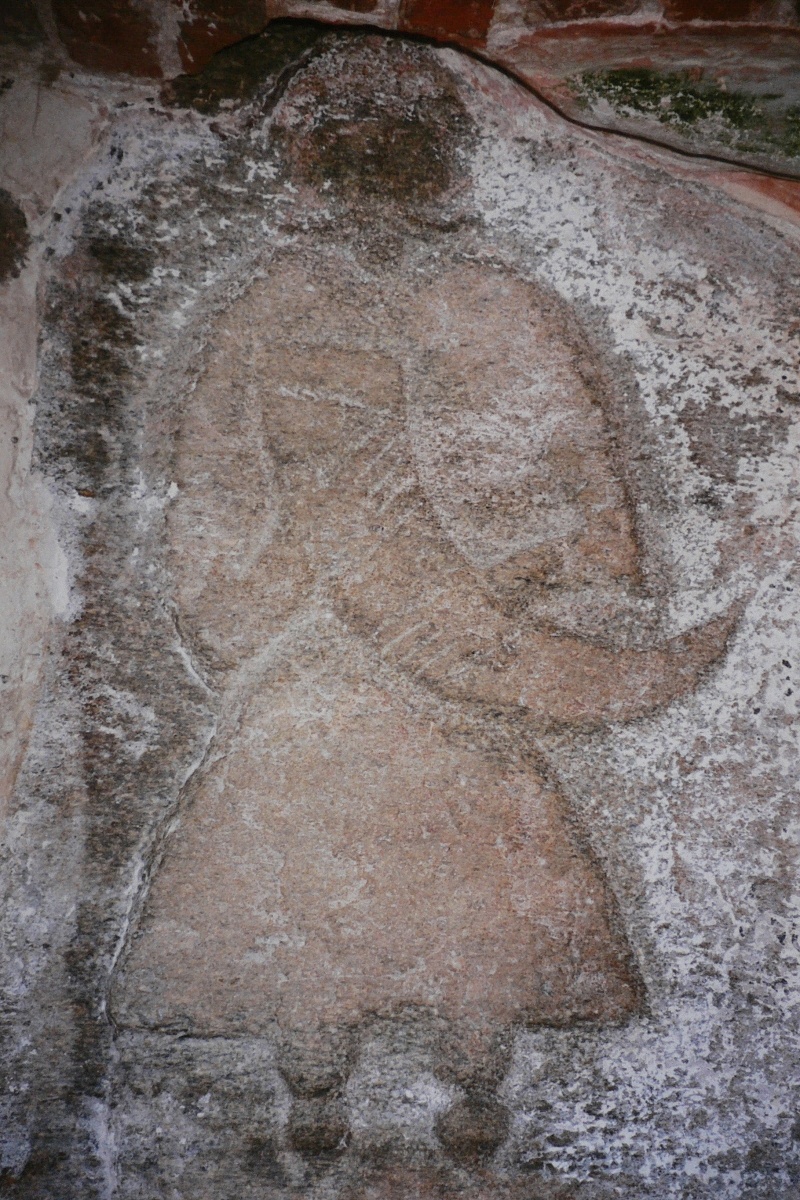|
Montenegrin Perun
The perun ( Cyrl, Перун, older spelling: ''Перунъ'') was the currency that was planned for introduction in Montenegro by Petar II Petrović Njegoš in 1851. However, he died the same year, and Montenegro later used the Austro-Hungarian krone until the 1906 introduction of the perper by Nicholas I of Montenegro. It was named after Perun, whom Njegoš considered to be the supreme god of Slavic mythology. If introduced, one Perun would have had equal value to two thaler A thaler or taler ( ; , previously spelled ) is one of the large silver coins minted in the states and territories of the Holy Roman Empire and the Habsburg monarchy during the Early Modern period. A ''thaler'' size silver coin has a diameter o ...s. See also * Montenegrin perper References * Central Bank of MontenegroMoney in Montenegro in the Past and Nowadays 19th century in Montenegro Proposed currencies Currencies of Montenegro {{Montenegro-stub ... [...More Info...] [...Related Items...] OR: [Wikipedia] [Google] [Baidu] [Amazon] |
Perun Obverse
In Slavic mythology, Perun () is the highest god of the pantheon and the god of sky, thunder, lightning, storms, rain, law, war, fertility and oak trees. His other attributes were fire, mountains, wind, iris, eagle, firmament (in Indo-European languages, this was joined with the notion of the ''sky of stone''), horses and carts, and weapons (hammer, axe (Axe of Perun), and arrow). The supreme god in the Kievan Rus' during the 9th-10th centuries, Perun was first associated with weapons made of stone and later with those of metal. Sources Of all historic records describing Slavic gods, those mentioning Perun are the most numerous. As early as the 6th century, he was mentioned in '' De Bello Gothico'', a historical source written by the Eastern Roman historian Procopius. A short note describing beliefs of a certain South Slavic tribe states they ''acknowledge that one god, creator of lightning, is the only lord of all: to him do they sacrifice an ox and all sacrificial animals. ... [...More Info...] [...Related Items...] OR: [Wikipedia] [Google] [Baidu] [Amazon] |
Currency
A currency is a standardization of money in any form, in use or circulation as a medium of exchange, for example banknotes and coins. A more general definition is that a currency is a ''system of money'' in common use within a specific environment over time, especially for people in a nation state. Under this definition, the British Pound sterling (£), euros (€), Japanese yen (¥), and U.S. dollars (US$) are examples of (government-issued) fiat currencies. Currencies may act as stores of value and be traded between nations in foreign exchange markets, which determine the relative values of the different currencies. Currencies in this sense are either chosen by users or decreed by governments, and each type has limited boundaries of acceptance; i.e., legal tender laws may require a particular unit of account for payments to government agencies. Other definitions of the term ''currency'' appear in the respective synonymous articles: banknote, coin, and money. Th ... [...More Info...] [...Related Items...] OR: [Wikipedia] [Google] [Baidu] [Amazon] |
Montenegro
, image_flag = Flag of Montenegro.svg , image_coat = Coat of arms of Montenegro.svg , coa_size = 80 , national_motto = , national_anthem = () , image_map = Europe-Montenegro.svg , map_caption = , image_map2 = , capital = Podgorica , coordinates = , largest_city = capital , official_languages = Montenegrin language, Montenegrin , languages2_type = Languages in official use , languages2 = , ethnic_groups = , ethnic_groups_ref = , ethnic_groups_year = 2023 census , religion = , religion_ref = , religion_year = 2023 census , demonym = Montenegrins, Montenegrin , government_type = Unitary parliamentary republic , leader_title1 = President of Montenegro, President , leader_name1 = Jakov Milatović , leader_title2 ... [...More Info...] [...Related Items...] OR: [Wikipedia] [Google] [Baidu] [Amazon] |
Petar II Petrović Njegoš
Petar (, sr-Cyrl, Петар) is a South Slavic masculine given name, their variant of the Biblical name Petros cognate to Peter. Derivative forms include Pero, Pejo, Pera, Perica, Petrica, Periša. Feminine equivalent is Petra. People mononymously known as Petar include: * * * Petar of Serbia ( – 917), early Prince of the Serbs * Petar of Duklja (), early archont in Dioclea * Petar Krešimir (died 1074/1075), King of Croatia and Dalmatia * Petar Delyan (r. 1040-1041), Bulgarian rebel, declared Emperor of Bulgaria Notable people with the name are numerous: * See also * Sveti Petar (other) * Petrov (other) * Petrić * Petričević Petričević ( sr-Cyrl, Петричевић) is a Serbo-Croatian surname, a patronymic A patronymic, or patronym, is a component of a personal name based on the given name of one's father, grandfather (more specifically an avonymic), or an ea ... References {{reflist Bulgarian masculine given names Croatian mascu ... [...More Info...] [...Related Items...] OR: [Wikipedia] [Google] [Baidu] [Amazon] |
Austro-Hungarian Krone
The krone (alternatively crown; , , , , , , , , , ) was the official currency of Austria-Hungary from 1892 (when it replaced the Austro-Hungarian gulden, gulden as part of the adoption of the gold standard) until the dissolution of the empire in 1918. The subunit was one hundredth of the main unit, and was called a in the Austrian and a in the Hungarian part of the Empire. Name The official name of the currency was (, plural, pl. ) in Austria and in Hungary. The Latin form (plural ), abbreviated to on the smaller coins, was used for the coinage of the mostly German-speaking part of the empire known as Cisleithania. Currency names in other ethnic languages were also recognised and appeared on the banknotes: (pl. ) in Czech language, Czech, (pl. ) in Polish language, Polish, , (pl. , ) in Ukrainian language, Ukrainian, (pl. ) in Italian language, Italian, (pl. ) in Slovene language, Slovene, / (singular and plural) in Serbo-Croatian, (pl. ) in Slovak language, Slov ... [...More Info...] [...Related Items...] OR: [Wikipedia] [Google] [Baidu] [Amazon] |
Nicholas I Of Montenegro
Nikola I Petrović-Njegoš ( sr-Cyrl, Никола I Петровић-Његош; – 1 March 1921) was the last monarch of Montenegro from 1860 to 1918, reigning as Principality of Montenegro, prince from 1860 to 1910 and as the country's first and only Kingdom of Montenegro, king from 1910 to 1918. His grandsons were kings Alexander I of Yugoslavia and Umberto II of Italy, among others. Biography Early life Nikola was born in the village of Njeguši, the home of the reigning House of Petrović. He was the son of Mirko Petrović-Njegoš, a celebrated Montenegrin warrior (an elder brother to Danilo I, Prince of Montenegro, Danilo I of Montenegro) and his wife, Anastasija Martinovitch-Orlovitch, Martinovich (1824–1895). After 1696, when the dignity of vladika, or prince-bishop, became hereditary in the Petrović family, the sovereign power had descended from uncle to nephew, the vladikas belonging to the order of the black clergy (i.e., monastic clergy) who are forbidden to marr ... [...More Info...] [...Related Items...] OR: [Wikipedia] [Google] [Baidu] [Amazon] |
Perun
In Slavic paganism, Slavic mythology, Perun () is the highest god of the Pantheon (religion), pantheon and the god of sky, thunder, lightning, storms, rain, law, war, fertility and oak trees. His other attributes were fire, mountains, wind, iris (plant), iris, eagle, firmament (in Indo-European languages, this was joined with the notion of the ''sky of stone''), horses and carts, and weapons (hammer, axe (Axe of Perun), and arrow). The supreme god in the Kievan Rus' during the 9th-10th centuries, Perun was first associated with weapons made of Rock (geology), stone and later with those of metal. Sources Of all historic records describing Slavic gods, those mentioning Perun are the most numerous. As early as the 6th century, he was mentioned in ''De Bello Gothico'', a historical source written by the Byzantine Empire, Eastern Roman historian Procopius. A short note describing beliefs of a certain South Slavic tribe states they ''acknowledge that one god, creator of lightning, ... [...More Info...] [...Related Items...] OR: [Wikipedia] [Google] [Baidu] [Amazon] |
Slavic Mythology
Slavic paganism, Slavic mythology, or Slavic religion refer to the Religion, religious beliefs, myths, and ritual practices of the Slavs before Christianisation of the Slavs, Christianisation, which occurred at various stages between the 8th and the 13th century. The South Slavs, who likely settled in the Balkans during the 6th–7th centuries AD, bordering with the Byzantine Empire to the south, came under the sphere of influence of Eastern Christianity relatively early, beginning with the creation of writing systems for Slavic languages (first Glagolitic, and then Cyrillic script) in 855 by the brothers Saints Cyril and Methodius and the adoption of Christianity in First Bulgarian Empire, Bulgaria in 864 and 863 in Great Moravia. The East Slavs followed with the official adoption in 988 by Vladimir the Great of Kievan Rus'. The process of Christianising the West Slavs was more gradual and complicated compared to their eastern counterparts. The Moravians accepted Christianity a ... [...More Info...] [...Related Items...] OR: [Wikipedia] [Google] [Baidu] [Amazon] |
Thaler
A thaler or taler ( ; , previously spelled ) is one of the large silver coins minted in the states and territories of the Holy Roman Empire and the Habsburg monarchy during the Early Modern period. A ''thaler'' size silver coin has a diameter of about and a weight of about 25 to 30 grams (roughly 1 ounce). The word is shortened from , the original ''thaler'' coin minted in Joachimsthal, Bohemia, from 1520. While the first standard coin of the Holy Roman Empire was the of 1524, its longest-lived coin was the , which contained Cologne Mark of fine silver (or 25.984 g), and which was issued in various versions from 1566 to 1875. From the 17th century a lesser-valued '' North German thaler'' currency unit emerged, which by the 19th century became par with the . The ''thaler'' silver coin type continued to be minted until the 20th century in the form of the Mexican peso until 1914, the five Swiss franc coin until 1928, the US silver dollar until 1935, and the Austrian Ma ... [...More Info...] [...Related Items...] OR: [Wikipedia] [Google] [Baidu] [Amazon] |
Central Bank Of Montenegro
The Central Bank of Montenegro (', or CBCG) is the central bank of Montenegro. Montenegro does not issue its own currency, and unilaterally adopted the euro in 2002. The stated mission of the central bank is to establish and maintain a sound banking system and monetary policy. The Central Bank of Montenegro was established by the Parliament of Montenegro in November 2000, when the country was part of a political union of Federal Republic of Yugoslavia. With its establishment, the Republic of Montenegro obtained an independent authority responsible for monetary policy, and establishment and maintenance of sound banking system and efficient payment system operations. The Central Bank of Montenegro does not participate in the European System of Central Banks or in ECB meetings. Instead, it tracks ECB policy, making the latter the ''de facto'' central bank of Montenegro for monetary policy purposes. One of the main proclaimed goals of the Central Bank of Montenegro is the accession of ... [...More Info...] [...Related Items...] OR: [Wikipedia] [Google] [Baidu] [Amazon] |







